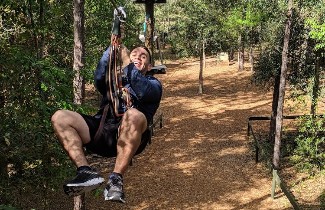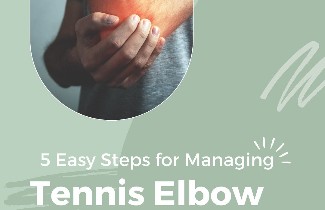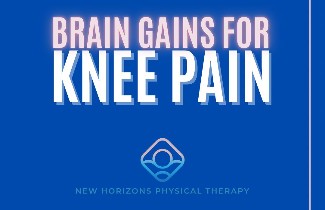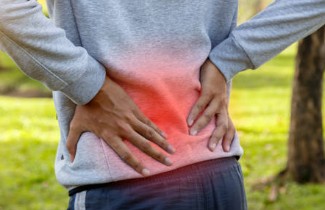





I am on a mission to help active adults and retirees in Central Florida maintain peak physical fitness year-round so they can continue to enjoy the activities they love on the courts and on the links. My clients most pressing needs are learning how to manage their pain as efficiently as possible, avoiding medications and expensive surgeries, and maintaining their active lifestyles. I address these problems by performing a thorough examination and providing personalized care from day one, utilizing an active approach to address all current problems and proactive approach to prevent new ones from developing. I teach my clients how to use their strengths to remain active, while we collaborate to improve upon their weaknesses. The #1 result my clients get with me is lasting change, but on a more personal level my clients experience an increase in confidence and optimism. I am on a mission to educate my community about the value of exercise and to help them realize their pain does not define them.
$150
Mobile concierge physical therapy brings personalized one-on-one care to the comfort and safety of your own home. Working with a mobile concierge therapist eliminates having to commute to appointments and wait in busy lobbies. This model inherently allows you to progress more rapidly because treatme...
VIEW MORE REQUEST TO BOOK$100
I first opened my mobile concierge practice in 2022. Since then I have grown into a trusted and popular Physical Therapist who has developed a reputation in Central Florida for excellence. I focus on delivering the highest quality of patient care in a relaxed and friendly atmosphere. I understand th...
VIEW MORE REQUEST TO BOOK
Tennis elbow is the most common overuse syndrome of the elbow. Only 5%...Read More
Tennis elbow is the most common overuse syndrome of the elbow. Only 5% of people suffering from tennis elbow actually relate the injury to tennis! It often occurs due to repetitive upper extremity activities such as computer use, heavy lifting, forceful use of forearm, and repetitive vibration.
EDUCATION
Tennis elbow will resolve with adequate rest and time. Do your best to avoid pain-provoking activities. Minimize work tasks that require deviated wrist positions, forceful gripping, and highly repetitive movements.
STRENGTHENING
Using a light dumbbell or elastic band, position your forearm on a table with your hand off the edge and palm facing the floor, then slightly extend your wrist towards the ceiling and hold for 30-60 seconds for 3 sets daily. Progress by slowly moving your wrist upwards through a 5 second count, and then slowly moving your wrist downwards through another 5 second count; repeat 3 sets of 10 repetitions daily.
STRETCHING
Begin by extending your elbow and turning your palm towards the floor, then use your other hand to push your wrist towards the floor and towards your pinky side simultaneously. Hold for 30-45 seconds and repeat 3 times daily.
MASSAGE
Using your thumb, identify the area of tenderness on the outside of your elbow, apply moderate pressure through this area, and oscillate across the tendon in the direction perpendicular to your forearm. Perform for 5 minutes daily.
BRACING
Position counterforce brace one thumb’s breath below the area of tenderness. Fit should be snug, but comfortable. Use throughout the day during your regular activities.

0

0

0
you must login

First, consider how long your knee has been bothering you. If the inju...Read More
First, consider how long your knee has been bothering you. If the injury occurred recently as opposed to several weeks or months ago, you will better be able to narrow down the source of your discomfort. Overuse injuries to the kneecap are frequent, but a hit to the knee during a fall or sport may result in an ACL or meniscus injury.
CHRONIC KNEE INJURIES
Pain can sometimes develop gradually over time because of overuse, lack of a proper exercise routine, plus a variety of other factors. Some of the more prevalent chronic knee conditions include patellofemoral pain, knee osteoarthritis, and runner's knee.
PATELLOFEMORAL PAIN
For your kneecap to move appropriately inside the groove of your femur, the soft tissues that attach to this joint must be flexible, and the muscles responsible for moving your kneecap must be strong. If certain soft tissues are tight, they may pull your kneecap in a less favorable direction, and if certain muscles are weak, your kneecap may not track properly. Kneecap discomfort is centered on the front of the knee and worsens with prolonged sitting, squatting, and climbing stairs.
KNEE OSTEOARTHRITIS
Discomfort that worsens over time with weight bearing, and stiffness that develops after prolonged sitting or standing are common symptoms of knee OA. Keep in mind that not everyone with radiographic evidence of knee OA is symptomatic, in fact, only 15% of these individuals actually have pain! Exercise stimulates the movement of synovial fluid, which aids in the nourishment of your joint. If weight bearing causes pain, begin with non-weight bearing activities that focus on mobility and strength.
RUNNER'S KNEE
This condition does not only affect runners, in fact, it is a term that describes a variety of conditions that cause discomfort around the front of the knee. Two of the most common causes of runner’s knee include kneecap issues and IT band friction syndrome. Just because someone has flat feet or weak hips does not mean this is the one and only reason they are in pain. Runner's knee can be prevented if you restructure your exercise routine to minimize overtraining, while also integrating a fair dosage of strengthening drills regularly.
START TODAY!
Understandably, your life may be hectic and finding time to exercise everyday may be difficult, however, there are methods you can start implementing today to move more purposefully if you are ready to make a conscious effort to do so. For example, rather than 'plopping' into a chair, sit down gently, engaging your muscles against gravity, or when using the stairs, minimize use of the railing and use your legs for greater propulsion.

0

0

0
you must login

Low back pain is the most frequent musculoskeletal complaint and one o...Read More
Low back pain is the most frequent musculoskeletal complaint and one of the leading causes of disability. However, don't be too concerned; low back pain might be compared to the common cold of the musculoskeletal system. Like the common cold, there can be a variety of contributing factors. The most effective strategy to handle low back pain is to treat it holistically.
MOVE
That's right. Move. Starting out with some gentle movement can help get the body's muscle and joints ready for the day and clear up that early morning stiffness. It's a good idea to incorporate movements that involve all directions. Think "Motion is Lotion".
STAND
One of the biggest evils contributing to back pain is prolonged sitting, which causes virtually all muscles associated with the hips and legs to maintain a shortened position. Such muscle shortening plays havoc to the back; particularly when one starts to engage in almost any activity. So, it's a good idea to Stand for even a few minutes throughout the day.
HAPPY FEET
There is a saying: "When the foot hits the ground, everything changes." In other words, the stress your feet endure when walking will effect the whole body above it. Do your body - and your back - a favor, and wear good supportive shoes.
UNCROSS THOSE LEGS
Research has shown that repeated cross-legged sitting causes undue stress on the pelvis and the lumbar spine. Eventually, this can cause back pain due to the positional stresses. Sit straight.
MOVE WITH EFFORT
Studies show that, regardless of one's health, moving with some effort (in other words, strength training) has been shown to REDUCE back pain. It is a good idea and highly recommended that one consult with a movement specialist (physical therapist, for example) prior to engaging in Effort Moving in order to avoid unwanted injuries.

0

0

0
you must login
I am on a mission to help active adults and retirees in Central Florida maintain peak physical fitness year-round so they can continue to enjoy the activities they love on the courts and on the links. My clients most pressing needs are learning how to manage their pain as efficiently as possible, avoiding medications and expensive surgeries, and maintaining their active lifestyles. I address these problems by performing a thorough examination and providing personalized care from day one, utilizing an active approach to address all current problems and proactive approach to prevent new ones from developing. I teach my clients how to use their strengths to remain active, while we collaborate to improve upon their weaknesses. The #1 result my clients get with me is lasting change, but on a more personal level my clients experience an increase in confidence and optimism. I am on a mission to educate my community about the value of exercise and to help them realize their pain does not define them.
Training Block was created with a mission to support and empower runners, in order to elevate our sport. We do so by giving runners access to a network of local sport performance providers, who provide runners with the care they need from coaching, physical therapy, massage, strength training, and more. We also give providers an easy way to connect with each other and share articles, videos, and other resources that benefit runners and providers alike. For every service booked through Training Block, we donate 10% of our revenues to Training Block’s Elite Athlete Fund, which sponsors elite runners who do not have professional contracts and need financial support for racing at their highest level.
Copyright © 2024 Training Block. All rights reserved.
Refer a friend and get $5 discount on order!